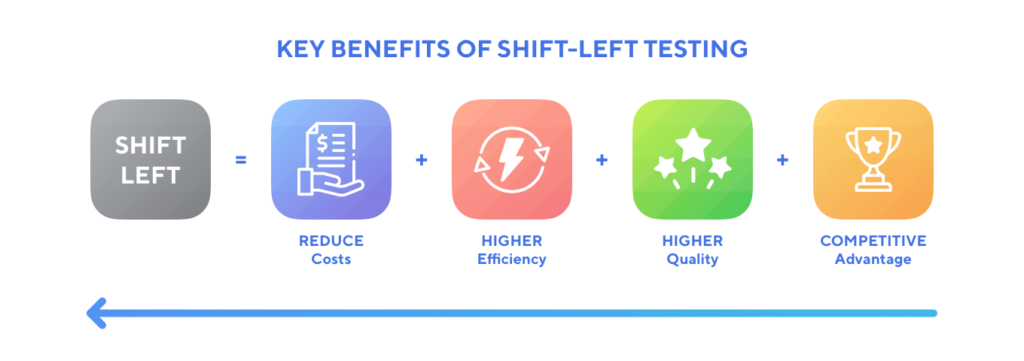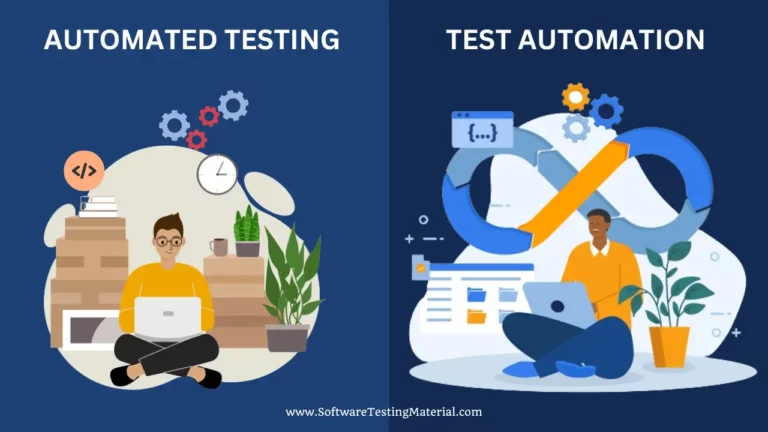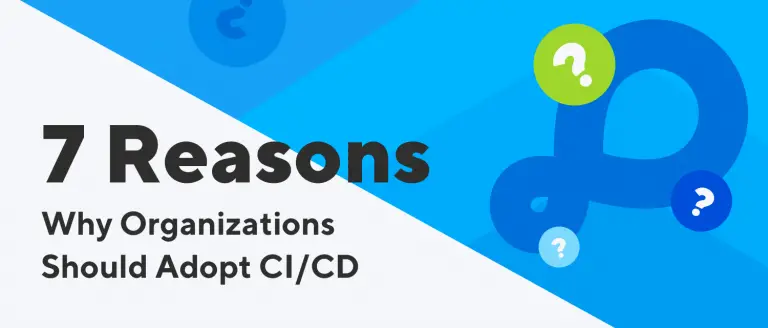What is Shift Left Testing? | Definition, Benefits, Challenges
In this article, you will learn what is shift left testing, challenges, benefits, and how to implement it into Software Development Life Cycle (SDLC) to ship quality software products.
If you want your company to remain relevant and succeed, meeting customers’ expectations is key. The demand for software products to be released quickly and of high quality is increasing rapidly, Agile and DevOps teams need to start using different methods so they don’t fall behind.
In today’s fast-paced world of software development, continuous testing and shift-left testing have become essential in order to release quality products that can compete with the best on the market.

What is Shift left Testing?
Shift-left testing is a term often used in the software industry to describe a method of software testing that occurs earlier in the software development life cycle.
The goal of shift-left testing is to find and fix defects before they impact the end users, when they are less expensive to fix.
This approach can help reduce overall costs and improve product quality.
In simple terms, shift-left testing is an approach to software and system testing that prioritizes performing testing earlier in the life-cycle. In other words, it adheres the well-known maxim: “Test early and often.”
Why Shift-left Testing Matters?
The shift-left testing methodology puts focuse on the “test early” principle. In recent years, it has become apparent that the waterfall development model is not effective for rapid releases.
After all, time is money. By implementing shift-left testing and incorporating testing early on in the process, businesses can release their product sooner than their competition.
Key Benefits of Shift left Testing

#1. Reduce costs
Time and resources are precious commodities that can often be wasted quickly. Shift-left testing helps to conserve those assets and save you money in the process.
#2. Higher efficiency
By adopting shift-left testing procedures, you can increase your testing reliability and get your product to market faster.
#3. Higher quality
Identifies bugs early on and fix them before they become a bigger issue later down the line in production.
#4. Competitive advantages
Utilizing shift-left testing allows you to produce software that is high quality and will be completed in a timely manner.
Types of Shift-Left Testing
The four basic types of shift-left testing are the following:
#1. Traditional Shift-Left Testing
Traditional shift-left simply means that the focus of testing emphasizes unit testing and integration testing (for example, modern API testing) instead of acceptance and system level testing.
#2. Incremental Shift-Left Testing
When teams want to shift from waterfall development to something that breaks down complex projects, they often do it by conducting smaller tests more frequently. With incremental testing, teams focus on one small part at a time and measure whether it meets their standards.
Many teams break their large projects down into a series of increments instead of one large project. This way, each increment is smaller and has a shorter duration. If each increment is also delivered to the customer or operations team, then incremental shift-left testing will move both developmental testing and operational testing further to the left. Incremental shift-left testing is commonly used when developing complex systems that use significant hardware components
#3. Agile/DevOps Testing
Agile testing only happens during the development stage and doesn’t cover operational testing, which is done after the system is already up and running. Many places are transitioning to Agile/DevOps “shift left” testing, where tests happen earlier in the development process.
#4. Model-Based Shift Left Testing
In the past, testers would only start testing software once it was already well into the development cycle. However, this method largely unlimited testing’s ability to uncover coding defects. Furthermore, these waiting periods are particularly troublesome because they introduce a 45-65% chance of design flaws in requirements, architecture and other activities.
Model based shift left testing is a new trend in the software world that enables testers to begin working almost immediately after receiving models, instead of waiting a long time as with traditional methods, or medium time as with incremental, or only a short time like with Agile/DevOps. This will become increasingly popular as more companies adopt executable models and simulation/testing tools.
Challenges of Shift-left Testing
#1. Planning
Incorporating shift-left testing can be tricky if you don’t have a solid plan to follow.
#2. Quality control
Maintaining excellent quality levels during the training and transition phase is not an easy task
#3. Developers
Developers who don’t frequently test their code may be resistant to adding testing to their workflow. However, being proficient in both development and testing is a valuable skillset that can lead to better quality software.
Best Practices of Shift-left Testing
#1. Project Management
To properly incorporate shift-left testing into your project management processes, you need to prepare and train your project managers accordingly.
#2. Audits
Code audits should be conducted frequently and regularly within your organization to ensure that the new testing procedure is effective.
#3. Silos
Bridging the gap between departments in your organization will create a more efficient feedback system that can quickly fix problems.
What Shift-Left and Continuous Testing implementations mean for your DevOps strategy?
Continuous testing is the practice of applying automated tests early, gradually and adequately in the software delivery pipeline.
While shift-left testing might sound like the perfect approach to help you in the testing process before rolling out new products, the technique alone is not enough.
Shift-left testing should be part of your continuous testing strategy so that testers can generate more comprehensive tests with functional data more frequently. The combination “shift-left continuous testing” refers to the automation of application testing to make sure it is used early and often during product development pipeline.
In simpler terms, by using shift left testing and continuous testing, bug detection will be done earlier in the process resulting in quicker feedback about issues and faster resolutions with less effort.
Conclusion
Overall, shift-left testing is about conducting tests earlier in the development process. By shifting left and taking advantage of modern software testing technologies, you can produce software that is safe, secure, and reliable.
Additionally, by moving your test efforts to the left side of the development spectrum, you can decrease testing’s total cost of ownership by identifying bugs when they’re still cheap and easy to fix–before they have a chance to propagate throughout your code base.
Related posts:
- What is Shift Right Testing
- Shift Left Testing vs Shift Right Testing
- What is Continuous Testing? Comprehensive Guide for Newbie
- What is CI/CD 101 | All You Need To Know






